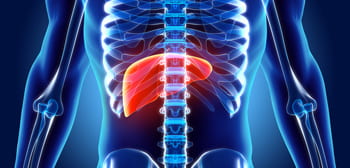Targeting patients with machine learning can increase the number of people getting liver cancer screenings, according to a National Institutes of Health-sponsored study by a research team from Rice University, Texas A&M University, Iowa State University and the University of Texas Southwestern Medical Center.
Regular and timely health screenings save lives through early detection, which can reduce symptoms and enable cheaper and more effective treatment during early stages of cancer. Yet screening rates remain dismally low. For example, just 4.2% of patients in the United States who are at high risk for lung cancer get screened. According to the Centers for Disease Control and Prevention, screening rates for cervical, breast and colorectal cancer fall short of Healthy People 2020 targets.
The authors of the study used a multiperiod, randomized field experiment involving 1,800 patients of a large hospital system in the greater Dallas area. Each patient was randomly assigned to one of three scenarios: “usual care,” where physicians offer preventive care recommendations at their discretion during a patient’s usual care visits; “light touch,” where patients receive outreach mail and standardized follow-up calls; or “patient navigation,” where patients receive the same outreach mail and follow-up calls along with motivational education. The research team observed screening rates for 18 months. They then used machine learning to maximize screening rates by developing an algorithm that matched outreach intervention to the right patients.
Without personalized targeting, outreach interventions increased screening rates to 25%, the researchers found. However, targeting with machine learning increased screening rates to about 45%-49%. “The best part of this personalized approach to targeted screening is that it is based on information already available in (patients’) records,” said Vikas Mittal, a professor of marketing at Rice’s Jones Graduate School of Business.
For example, Hispanic females who were relatively healthy and who received health care through charitable providers such as Dallas’ Ryan White HIV/AIDS Care Program were more likely to get screened if they received a letter in the mail advertising availability. In contrast, older Hispanic females who lived in high-income neighborhoods and had better access to clinics were more likely to get screened if they received a letter in the mail and a personalized phone call and assistance.
Implementing this approach could increase financial savings to the hospital system from $2.1 million to $3.7 million, or 74%, the research showed.
The study, “Improving Cancer Outreach Effectiveness Through Targeting and Economic Assessments: Insights from a Randomized Field Experiment,” is published in the Journal of Marketing.


